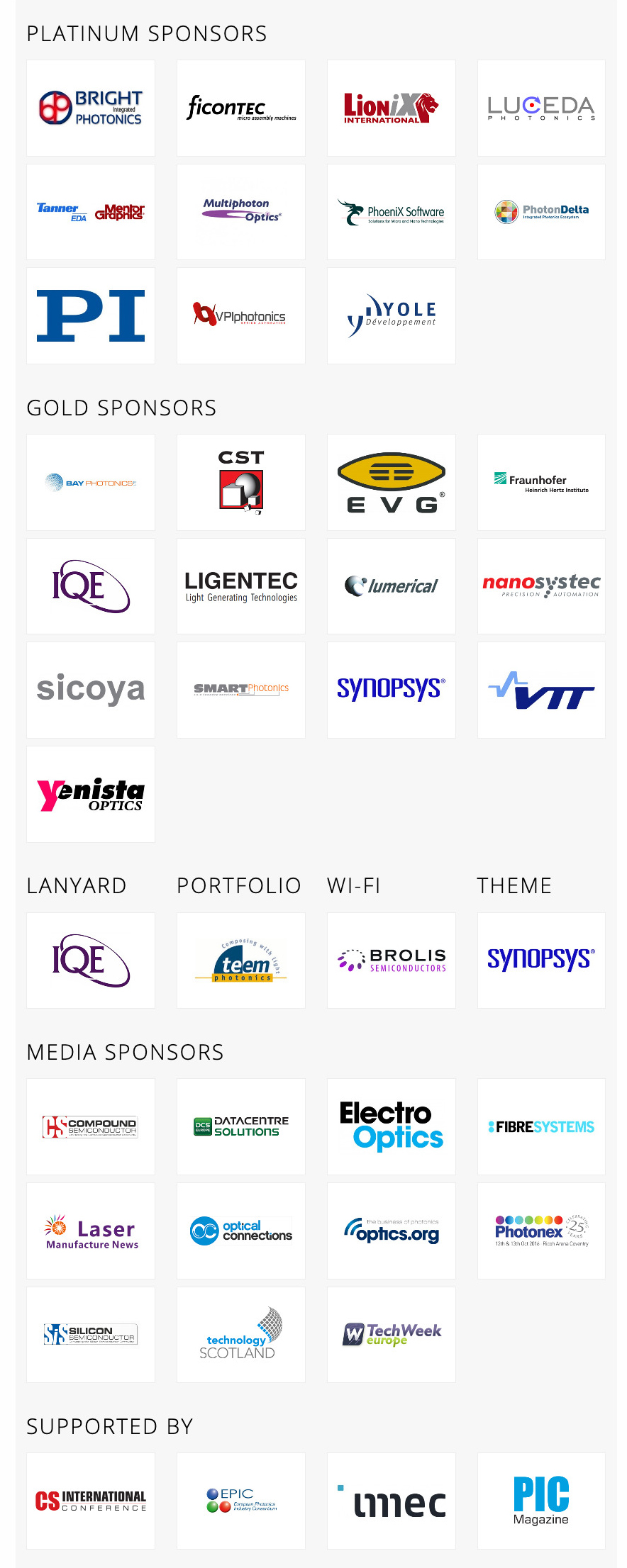Brussels proves a great venue as more than 550 attend the co-located PIC International, CS International and IoT International Conferences.
Conference Chair, Michael Lebby gives his thoughts on the 2017 PIC conference.
"This was the 2nd annual PIC International Conference, and again like in 2016, it surpassed everybody's expectations, not only from the organiser’s perspective, but from the attendees, and my perspective as chairman of the conference. We had for the first time the annual PIC awards which were awarded in six categories at the end of Day 1. With over 50 nominations and 6,000 votes, the industry decided their winners.
This year, there were over 550 delegates attending two days of jam-packed (and yes we had to bring in more chairs as there was standing room only) sessions on photonic integrated circuits (PICs) that spanned the whole value chain from wafers/materials, to devices, to modules, to systems, and finally to service providers, and in particular datacentres. Like last year, the atmosphere was at times electric.
In addition to incumbent PIC technologies such as InP and GaAs, we heard updates on Silicon Photonics (SiP), Polymer Photonics (PP), as well as a new category, Dielectric Photonics (DP).
Global sized optical network system companies gave very clear expectations of the need for PIC based technologies, while transceiver and module manufacturers, both international as well as start-ups presented the latest results in a field that is one of the most dynamic in the industry.
Technical areas addressed not only PIC technology choices: InP, Silicon photonics, polymer photonics, dielectric photonics, but explored scalability both to increase performance to 50 Gbps and 100 Gbps line rates for 400 Gbps transceivers, as well as decreased cost through more efficient PIC designs, packaging, and manufacturability. New issues of designing PICs with simple packaging, athermal designs, fully electronic and photonics integration at the device level, and the use of electronic microwave/RF techniques were discussed, as well as addressing photonics design tool kits, foundries, and open source software.
One of the most exciting sessions involved the improvements in PIC infrastructure for designing and manufacturing robust and reliable PICs using software tools for modeling, simulation, and production. This was supported by many PIC talks that addressed PDKs and other metrics needed to quickly grow PIC markets. Another new and innovative area were the talks on medical, life sciences and bio-photonics and how PICs based technologies can enable new products that are more miniature, low power, and high performance, which is becoming especially important for hand-held battery powered diagnosis and health monitoring products.
These speakers showed that the result of designing PICs for the popular verticals of telecommunications and data communications, the solutions could easily be applied to medical, measurement, automotive, and other industrial applications for PICs. Perhaps by next year’s PIC conference we will see the first products emerge in these new market segments. The good news is that some of these opportunities will be high volume and will promote more aggressive pricing strategies.
As Chairman, I reviewed all the speakers’ presentations at the end of each day. Not an easy assignment given the excellent results of many of the speakers. Clearly, the impact for the PIC technology is exciting and not expected to wane in coming years, with some presentations showing that PICs are forecasted to grow to over $20BUSD by 2025. Although InP is the incumbent technology today, other technologies such as silicon photonics, polymer photonics, and dielectric photonics were seen to be all symbiotic with each other as the PIC based segment in the marketplace grows over the next decade.
I look forward to an equally exciting 2018 PIC International Conference to follow this one in Brussels, Belgium."

